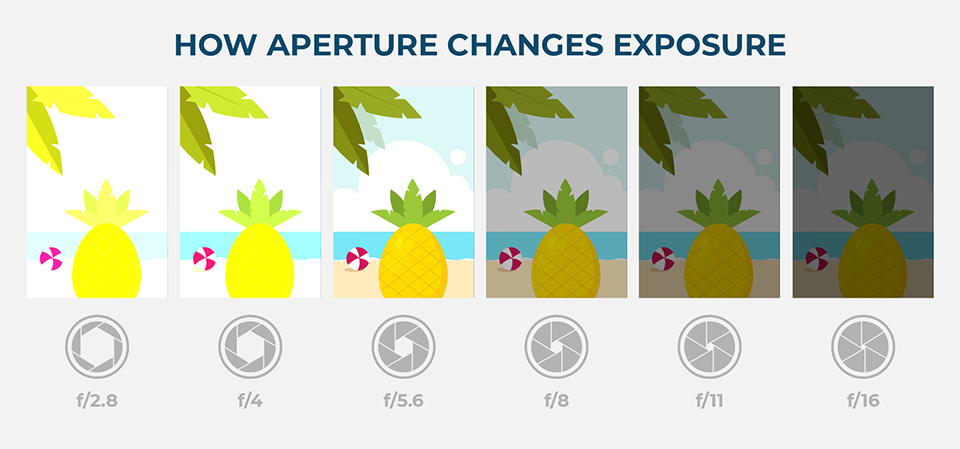

As you turn that dial, you should be able to see the f-numbers changing in the viewfinder or on the LCD screen. On some cameras or lenses, the aperture is adjusted via a dedicated ring around the lens, but most modern cameras put aperture control on the camera body itself, usually in the form of a command dial.
#SMALL APERTURE VS BIG APERTURE PORTRAIT MANUAL#
Aperture priority mode is an easy way to learn how aperture affects images - once you understand aperture priority (and its counterpart, shutter speed priority), manual mode won’t seem so daunting.
#SMALL APERTURE VS BIG APERTURE PORTRAIT ISO#
(It is possible to take the ISO off auto if you want).

This mode, designated on most camera mode dials as A or Av, allows you to control just the aperture, while the shutter speed and ISO can remain on auto. While you need to also understand ISO and shutter speed in order to control exposure in manual mode, you can dip your toes in slowly by starting with aperture priority mode. How do you change the aperture on your camera? That means f/2.8 is four times darker than f/1.4, although all you really need to know is the number of stops: If you open the aperture by 2 stops, you’ll need to change the shutter speed or ISO by two stops to compensate. This shows that f/2.8 is half as bright as f/2, which itself is half as bright as f/1.4. Modern cameras allow you to make adjustments in 1/3-stop increments (oh no, more fractions!) so that you have fine control over the exposure. Decrease it by a stop, and you’ve cut the amount of light in half. As with shutter speed and ISO, aperture controls exposure in the unit of “stops.” Increase the size of the aperture by 1 stop, and you’ve doubled the amount of light coming through the lens. Some lenses may open as wide as f/1.4, or stop down to f/22 and beyond. Of course, there are more aperture settings than just f/2.8 and f/16. (F-numbers are actually the denominator of a fraction, so the math isn’t as backwards as it seems.) Just remember that f-numbers are opposite of what you’d expect: a low number means wide, and a higher means narrow. A larger f-number, like f/16, is a narrow aperture. A small f-number, like f/2.8, is a wide aperture. A smaller opening will let in less light and make the photo darker.Īpertures are measured in f-numbers, or f-stops, which is where the concept can start to get a bit more confusing. A larger opening is going to let in more light, making a photo brighter. An iris composed of overlapping metal blades inside the lens opens and closes to make the aperture larger or smaller. If you drop a handful of sand above each jar, which jar is going to collect more sand? Both jars have the same capacity, but one has a wide opening like a Mason jar and the other has a narrow opening like a soda bottle. Here’s everything new photographers need to know about using aperture. By changing the aperture setting, you increase or decrease the size of that opening, letting in less or more light, respectively. The word aperture simply means an opening, and that’s exactly what the aperture of a lens is.

Unlike shutter speed and ISO - the other two sides of that triangle - aperture isn’t in the camera, but the lens. How do you change the aperture on your camera?Īs part of the exposure triangle, aperture is an essential camera setting, helping determine how bright or dark the image is.


 0 kommentar(er)
0 kommentar(er)
